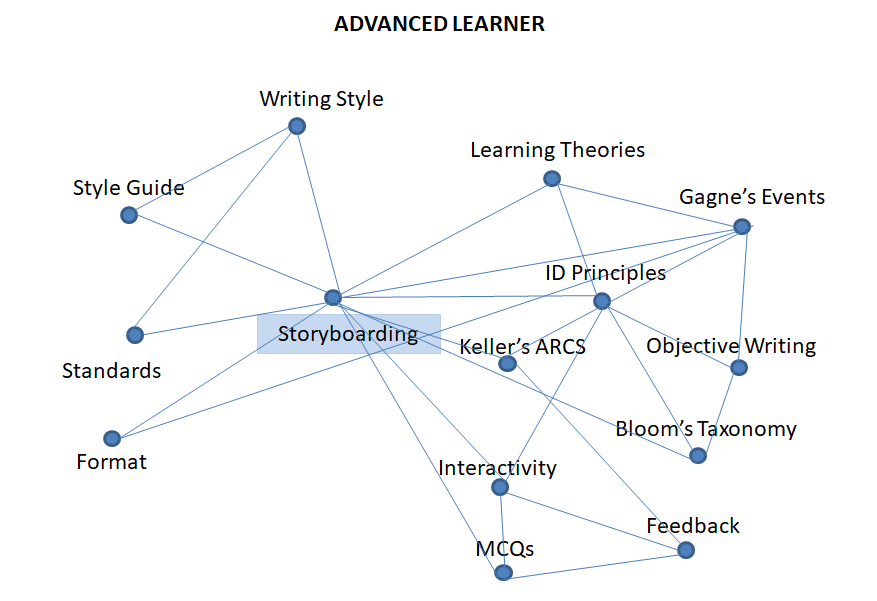
Cognitive load theory is credited to the work and research of John Sweller in the 1980s. In this article, I try and decode it to help Instructional Designers understand the concept and apply it when they design learning material. Since this is a tough concept with a number of inter-related elements, I have presented it as a series of FAQs. Hopefully, this will reduce the cognitive load!
What does Cognitive Load mean?
Your working memory is used when you learn something new. The effort required to process new information by your working memory is known as Cognitive Load.
How does it impact learning?
Working memory is limited in capacity – it cannot hold too much information. High cognitive load requires more working memory resources and thus impacts the learning process.
How can you determine if the Cognitive Load is high or low?
Two factors impact Cognitive Load.
- Content Complexity: Some content is inherently complex, and its very nature places a load on working memory resources. This is known as Intrinsic Cognitive Load.
- Learner Profile: If the learner is a novice, inherently complex content can create a Cognitive Load. However, the same content may not seem as difficult or complex to an intermediate or advanced learner.
What is Element Interactivity?
Element interactivity refers to the logically-related elements in learning material. Since the elements are related, they must be processed simultaneously in working memory. These elements need to be connected by the learner in order to develop a deep understanding of the subject. Content with a high number of interacting elements is said to be high in element interactivity.
Here is an example. Consider that you are teaching a new recruit in your organization the storyboarding process in ELearning. Here is all that you would need to cover.
This is content with high element interactivity. Each element further has concepts and sub-concepts embedded within. Furthermore, these elements are also interconnected. But at the moment, for any novice these are all disparate terms. He/she will not be able to connect any of these elements.
So, we can assume that this content will impose a high cognitive load on a novice learner.
The same content for someone who is trained in the storyboarding process, and has also written a couple of storyboards, would appear less daunting because he/she has developed a mental schema through learning, practice, and retrieval. Schemas are an efficient way to organize interrelated concepts in a meaningful way. A person with some understanding of the scripting process will possess a schema such as this. As you can see, many connections are made between the elements.
Finally, an Instructional Designer with five or more years of experience has learned and applied these concepts many times. Each time the designer wrote a script, the connections between various elements became stronger. The experience also helped the designer to connect more concepts, which perhaps earlier seemed to be unconnected. An advanced learner’s schema on the scripting process will appear something like this.
Is high element interactivity the only aspect that impacts Cognitive Load?
No. Element interactivity causes Intrinsic Cognitive Load. But at times, the way we design learning material can create an added Cognitive Load. This is called Extrinsic Load. For example, if we were to design this entire program with all the concepts listed in the diagram using a game, it will add to the Cognitive Load. Because, now along with the content, the learner must learn the rules of the game too!
In addition, there is a third type of Cognitive Load, called Germane Load. This load helps novices to learn new material. Hence, this load is considered to be a nice-to-have load.
What is Germane Load?
Germane Load refers to the working memory resources available to deal with the element interactivity associated with intrinsic cognitive load. This type of cognitive load is directly associated with the construction of the schema. To continue with our example, structuring the content related to the scripting process as a series of meaningful tasks (refer to the first column in the Table) will help learners develop a schema.
What should Instructional Designers do to address Cognitive Load?
They can do three things.
1. Manage Intrinsic Cognitive Load: This can be achieved in many ways:
- Chunk Content: Content can be chunked into small independent learning units (yes, it’s possible – you just have to try hard). This is similar to the concept of Microlearning that has become popular these days.
- Remove material that is to be “referenced” and not learned: They can identify content pieces that may be provided as job-aids or ready reckoners, and remove these from the teaching-learning process. In our example, we can provide the Storyboard format as a job-aid that can be referred to by the learner while working. Refer to the image below. This is an image of a job-aid, which explains what goes into each column in the Scripting Format.
- Provide worked examples. Worked examples help reduce intrinsic cognitive load. In our example of the scripting process, this can be reference material that learners can use after the training is complete. The image below is an example of a sample script with comments explaining how each column should be populated.
2. Minimize Extrinsic Load: Do not add design elements that will create an additional Cognitive Load. For example, avoid using Game-based learning to teach complex content or content with high element interactivity.
3. Optimize Germane Load: Help your learners to develop schemas. Organize interrelated concepts in a meaningful way. Refer to the image below. Columns 2 (Why), 3 (Principle/Framework) and 4 (Output/Deliverable) in the Table are meant to depict how various elements that make up the Scripting process are connected.
Anything else?
If you have any other query related to Cognitive Load, post it in the Comments section below and we will get back to you with our response at the earliest!

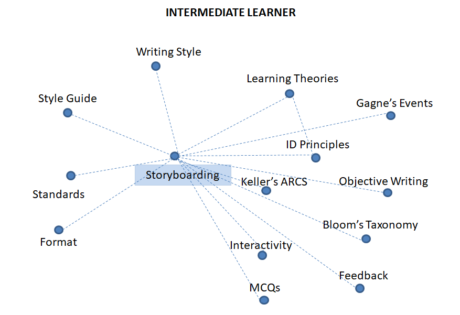
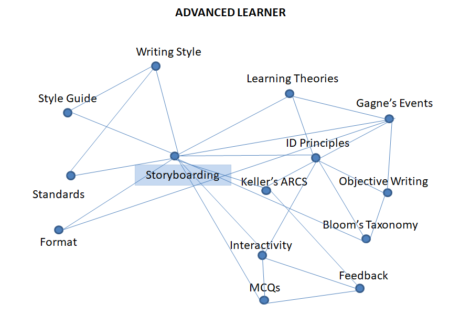
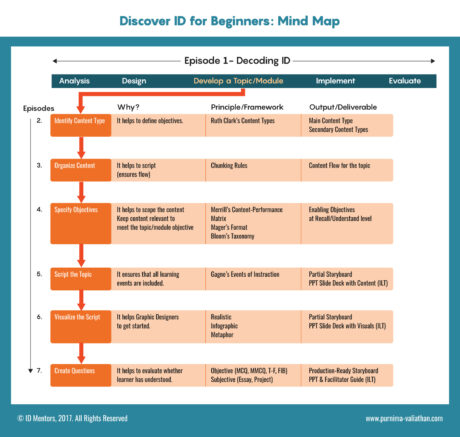
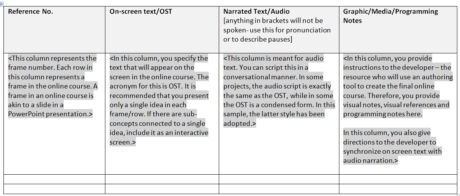


0 responses on "Demystifying Cognitive Load Theory"